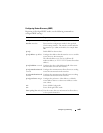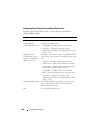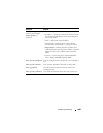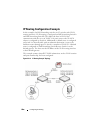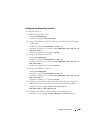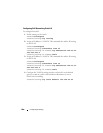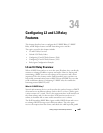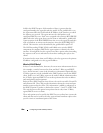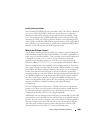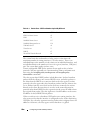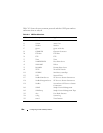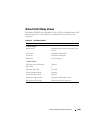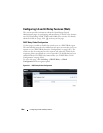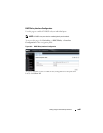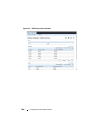
Configuring L2 and L3 Relay Features 1089
Enabling L2 Relay on VLANs
You can enable L2 DHCP relay on a particular VLAN. The VLAN is identified
by a service VLAN ID (S-VID), which a service provider uses to identify a
customer’s traffic while traversing the provider network to multiple remote
sites. The switch uses the VLAN membership of the switch port client (the
customer VLAN ID, or C-VID) to perform a lookup a corresponding S-VID.
If the S-VID is enabled for DHCP Relay, then the packet can be forwarded. If
the C-VID does not correspond to an S-VID that is enabled for DHCP Relay,
then the switch will not relay the DHCP request packet.
What Is the IP Helper Feature?
The IP Helper feature provides the ability for a router to forward configured
UDP broadcast packets to a particular IP address. This allows applications to
reach servers on non-local subnets. This is possible even when the application
is designed to assume a server is always on a local subnet or when the
application uses broadcast packets to reach the server (with the limited
broadcast address 255.255.255.255, or a network directed broadcast address).
You can configure relay entries globally and on routing interfaces. Each relay
entry maps an ingress interface and destination UDP port number to a single
IPv4 address (the helper address). Multiple relay entries may be configured
for the same interface and UDP port, in which case the relay agent relays
matching packets to each server address. Interface configuration takes priority
over global configuration. If the destination UDP port for a packet matches
any entry on the ingress interface, the packet is handled according to the
interface configuration. If the packet does not match any entry on the ingress
interface, the packet is handled according to the global IP helper
configuration.
You can configure discard relay entries. Discard entries are used to discard
packets received on a specific interface when those packets would otherwise
be relayed according to a global relay entry. Discard relay entries may be
configured on interfaces, but are not configured globally.
Additionally, you can configure which UDP ports are forwarded. Certain UDP
port numbers can be selected from the web interface or specified by name in
the CLI, but you can also configure a relay entry with any UDP port number.
You may configure relay entries that do not specify a destination UDP port.
The relay agent assumes that these entries match packets with the UDP
destination ports listed in Table 34-1 (the list of default ports).



